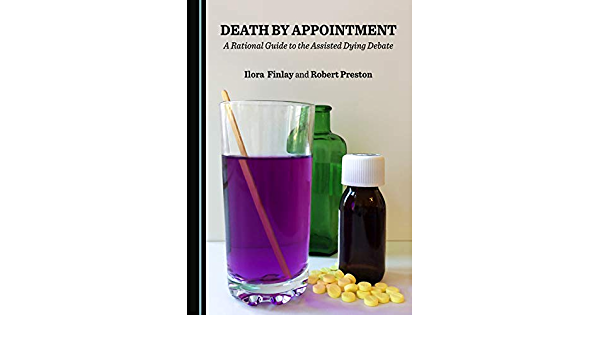What the reviewers said: ‘I found this book highly thought provoking, and would recommend it for all nurses, not just those working in palliative care’

By Steve Ford
‘Death by Appointment’ – a stark title for a book – but far from a work of fiction. The book, written by two experts in the field, informs the reader about the complexities of the ‘assisted dying’ debate, from a wide aspect – spanning from legal to medical, and a whole range in between.
This book does not pull any punches. Issues of ethics, morals, the psychosocial, the burden on both professionals and patients, and safety are dealt with head on and are highly thought provoking.
The facts are conveyed in a clear manner, inviting you to make your own measured conclusions. This would benefit an audience way beyond only health professionals.
What were the highlights?
As a starting point and to help dispel myths, it is very helpful to have clear explanations of the terminology of the law in the UK currently, and the definitions of physician-assisted suicide and physician-assisted euthanasia.
The referenced evidence from the global picture where laws in ‘assisted dying’ have changed, and the impact that will make on our decision making, result in powerful reading.
The clear, systematic description of the countries examined, the potential burden on doctors for decision making, and the dilemmas for caring professionals and for families informs the reader of the complexities of the topic. Reference to the role of nurse practitioners in decision making in Quebec sharply brings relevance to nurse readers.
The descriptive elements of the value of expert clinical palliative care were reassuring. The reminder of the recent valuable contribution of palliative care to those patients suffering with the effects of Covid-19 made this book highly topical and as well as relevant.
It was surprising – and concerning – to learn how changes in the current legislation may impact not only the terminally ill, but also those with chronic illness.
Strengths and Weaknesses?
A major strength of this book is the ongoing theme of the recognition of respect for the reader’s views.
With two authors of different but extensive experience in the ‘assisted dying’ debate, there is a good balance with alternatively written chapters, which successfully engages the reader to carry on reading. This also enables a widely based audience to learn, influence practice and make informed choices.
For example, there are references to previous evidence-based reports which ably and systematically outline the impact of the changes where the law relating to ‘assisted dying’, under certain jurisdiction, is permitted. Ripe with statistics, this can at times be overwhelming; nonetheless, revealing and surprising.
This is well balanced by the qualitative narrative which successfully probes beneath the surface, relating it to professional ‘hands on’ care in the UK.
Descriptions are given as to how co-ordinated interdisciplinary team work in palliative care can help to alleviate fear in the management of end of life. This makes for reassuring reading by someone who may not be aware of provisions that are already in place.
There can be no doubt that the marrying up of the authors’ chapters works well to convey a strong message of caution in any change in the current law. Their jointly written chapters summarise succinctly the complexities of the topic.
The impact of changes in the law elsewhere in the world and the potential additional burden on the patient in their decision making cannot be ignored.
The length of the book makes it imminently readable. The chapter headings make it a useful reference guide.
Who should read it?
This guide is a compelling read for a wide audience. The public, politicians and policy makers would benefit. It is certainly not confined to medical, nursing, social and health care professionals.
It is a welcome contribution to the debate. On a topic that ultimately is one of safeguarding for us all in the future, it cannot fail to be thought provoking.
Complete Article ↪HERE↩!
